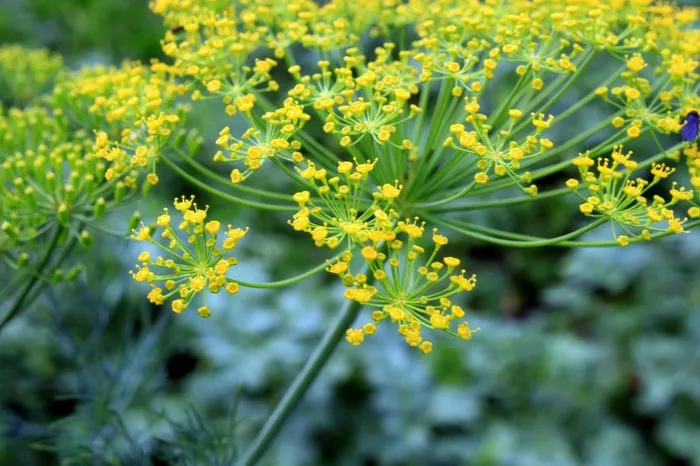Dill, with its feathery foliage and distinct aroma, is a beloved herb in kitchens worldwide. From seasoning pickles to flavoring fish, its versatility knows no bounds. However, when it comes to dill flowers, many culinary enthusiasts ponder their edibility and potential uses. In this article, we’ll explore the question: Can you eat dill flowers?
Understanding Dill: A Culinary Gem
Before delving into the realm of dill flowers, it’s crucial to grasp the essence of this herb. Dill (Anethum graveolens) belongs to the Apiaceae family, commonly known as the parsley family. Native to the Mediterranean region and southern Russia, dill has been cherished for centuries for both its culinary and medicinal properties.
The herb’s delicate, fern-like leaves exude a fresh, slightly sweet flavor with hints of anise and lemon. This distinctive taste profile makes dill a staple ingredient in various cuisines, including Scandinavian, Eastern European, and Mediterranean.
The Versatility of Dill in Culinary Applications
Dill’s culinary applications are as diverse as they are delightful. Here are some common uses of dill in cooking:
1. Pickling: Dill is synonymous with pickling, particularly cucumbers. Its aromatic leaves infuse pickling brines with a subtle yet refreshing flavor, resulting in the beloved dill pickle.
2. Seafood: Dill pairs impeccably with fish and seafood dishes. Whether sprinkled fresh over grilled salmon or incorporated into creamy sauces for shrimp, its bright flavor elevates any seafood ensemble.
3. Salads: Adding chopped dill to salads imparts a burst of freshness. Its citrusy notes complement the crispness of greens, making it a popular choice for salads alongside ingredients like cucumber, avocado, and feta cheese.
4. Soups and Stews: Dill lends its aromatic charm to soups and stews, enhancing their depth of flavor. Whether in a comforting potato soup or a hearty beef stew, a sprinkle of dill adds an extra layer of complexity.
5.Baking: While less common, dill can surprise and delight in baked goods. Incorporating it into bread, crackers, or savory pastries offers a unique twist on traditional recipes.
Unveiling the Delicate Beauty of Dill Flowers
Now, let’s address the focal point of our inquiry: dill flowers. These delicate blooms emerge atop the herb’s tall, slender stems, adding a touch of ethereal beauty to any garden or culinary creation. But are they edible?
Can You Eat Dill Flowers?
The answer is a resounding yes! Dill flowers are not only edible but also possess a flavor profile similar to that of the herb’s leaves. They offer a milder, subtler version of dill’s characteristic taste, making them a delightful addition to various dishes.
Ways to Incorporate Dill Flowers into Your Cooking
Now that we’ve established the edibility of dill flowers, let’s explore some creative ways to incorporate them into your culinary endeavors:
1. Garnish: Sprinkle dill flowers over finished dishes to impart a delicate floral aroma and visual appeal. They make an exquisite garnish for salads, soups, seafood, and roasted vegetables.
2. Infusions: Infuse oils, vinegars, or spirits with dill flowers to capture their essence. These infused liquids can then be used to dress salads, marinate meats, or enhance cocktails with a hint of dill’s floral notes.
3. Herb Butter: Blend finely chopped dill flowers into softened butter along with other herbs for a fragrant herb butter. Spread it over bread, melt it onto grilled meats, or toss it with pasta for a burst of flavor.
4. Pickling Brines: Add dill flowers to pickling brines along with the herb’s leaves for an extra layer of complexity. They infuse the brine with a subtle floral nuance, elevating the flavor of pickled vegetables.
5. Herb Blends: Combine dill flowers with other herbs, such as parsley, chives, and tarragon, to create custom herb blends. Use these blends to season meats, poultry, seafood, or roasted vegetables for a harmonious flavor profile.
Harvesting Dill Flowers
When harvesting dill flowers, opt for those that have just begun to open. This stage offers the best balance of flavor and fragrance. Use scissors or garden shears to snip the flowers from the stem, taking care not to damage the plant.
Conclusion
In conclusion, dill flowers are not only edible but also offer a delightful extension of dill’s culinary versatility. With their delicate flavor and ethereal beauty, they elevate dishes with a subtle floral nuance. From garnishes to infusions, there are countless ways to incorporate dill flowers into your cooking repertoire. So, the next time you encounter these delicate blooms in your herb garden, don’t hesitate to pluck them and let your culinary creativity blossom.


